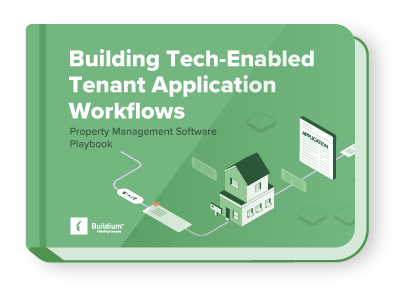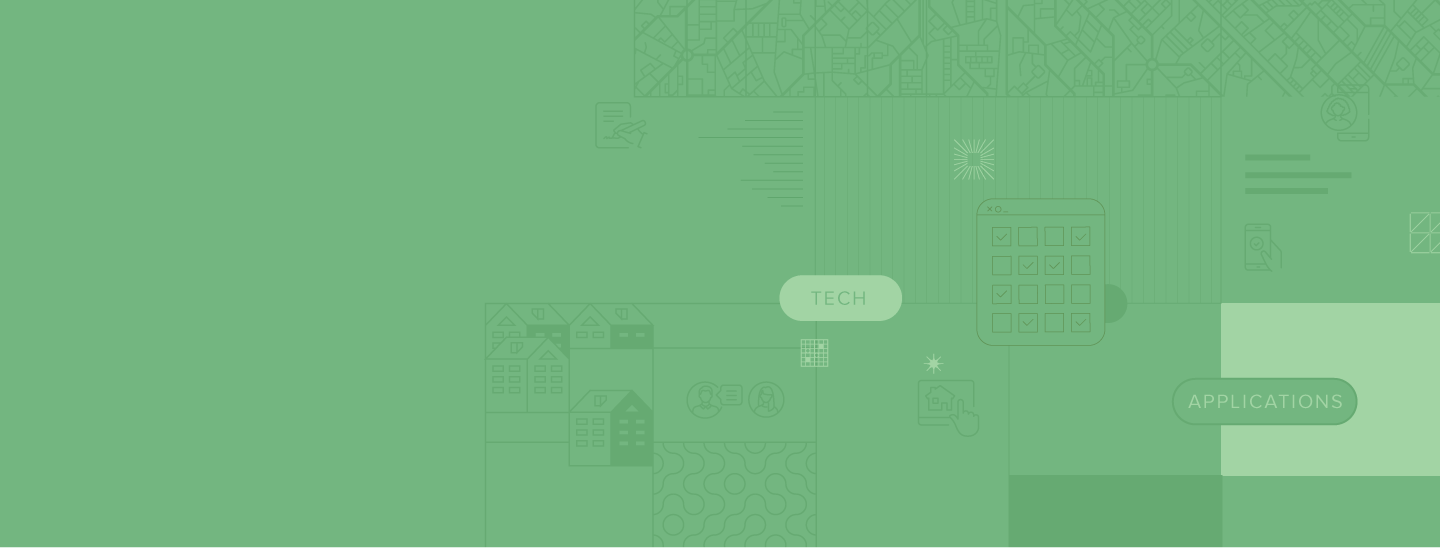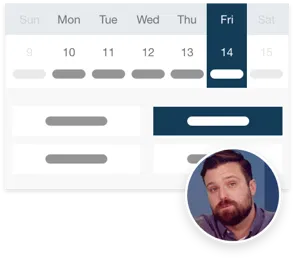Property management has gone mobile—and for many professionals, that means managing operations directly from their iPhone. Whether you’re handling tenant requests in real time, coordinating with vendors, or keeping tabs on finances, the right tools in your pocket can turn hours of admin into minutes of smooth execution.
Start your free trial today!
Try Buildium for free for 14 days. No credit card needed.
Start Your TrialIn this guide, we’ll break down everything property managers need to know about property management apps for iPhone (and any other mobile operating system), including what they are, how they work, what to look for, and how to choose the right options for your business.
You’ll get a full understanding of how to evaluate your choices and use mobile tools that keeps your team flexible and your tenants satisfied.
Why iPhone Apps Matter in Property Management
The shift to mobile-first property management is all about staying responsive, competitive, and in control.
Today’s renters expect quick replies, digital communication, and seamless service. Owners want transparency, real-time updates, and fast reporting. Maintenance vendors want simple ways to receive and confirm work orders.
Doing all of this from a desktop alone can slow you down. But with property management apps for iPhone, Android, and any other operating system you can:
- Respond to tenant issues from anywhere
- Schedule showings on the fly
- Log inspections and upload photos instantly
- Track rent payments and maintenance requests in real time
- Communicate with owners and vendors seamlessly
In short, you don’t have to be at your desk to keep the business moving.
Key Benefits of Using Property Management Apps for iPhone
Let’s look at some of the biggest advantages of working from your phone as a property manager.
1. Work from Anywhere
One of the most obvious benefits: mobility. Whether you’re in the field, at home, or on vacation, your phone becomes mission control.
With the right app setup, you can:
- Check rent status
- Approve applications
- Assign work orders
- Communicate with owners
- Share documents
- Track key tasks
No laptop or office required.
2. Speed Up Communication
Tenant and vendor relationships thrive on responsiveness. Property management apps for iPhone let you:
- Reply to maintenance requests in real time
- Send messages and updates without delay
- Upload photos, notes, and videos on the spot
This both improves your service and builds trust and keeps everyone on the same page.
3. Simplify Documentation
Your iPhone becomes your camera, scanner, notepad, and filing cabinet in one.
You can:
- Snap and upload inspection photos
- Record notes with voice-to-text
- Store lease agreements securely
- Share documents with owners or tenants instantly
No more chasing paper trails or digging through emails.
4. Automate Daily Tasks
Many apps support automation features for things like:
- Rent reminders
- Maintenance tracking
- Lease renewal notices
- Owner statement generation
You get more done with fewer manual steps—saving time and reducing the risk of human error.
5. Improve Team Collaboration
If you manage a team, mobile access means everyone stays in sync, even when working remotely.
iPhone apps let you:
- Assign tasks
- Track progress
- Message team members
- Share calendars and checklists
It creates a shared workspace without needing to be in the same place.
Common Features in Property Management Apps for iPhone
When evaluating property management apps, look for tools that align with your most frequent workflows. While the features vary, most mobile property management solutions offer a combination of the following:
Tenant and Lease Management
Track resident information, lease dates, move-in/out tasks, renewals, and communication history.
Online Rent Collection
See who’s paid, who hasn’t, and when payments were made. Some apps allow tenants to pay through a mobile portal.
Maintenance Tracking
Create, assign, and monitor work orders. Many apps let tenants submit requests with photos, which you can approve and dispatch to vendors—all from your phone.
Unit and Portfolio Overview
View your properties and units at a glance, including occupancy status, rent roll, and financial performance.
In-App Messaging or Communication
Send and receive messages from tenants, owners, or vendors. Many apps include push notifications or SMS-style communication.
Owner Reporting
Generate and share income statements, expense logs, or maintenance summaries with owners or stakeholders.
Photo and File Uploads
Attach property photos, inspection reports, or signed documents directly from your camera or file library.
Calendar and Task Management
View upcoming lease expirations, showings, maintenance appointments, and key deadlines all in one place.
Evaluating Property Management Apps for iPhone: What to Consider
With so many tools on the market, how do you pick the right app for your needs—especially if you plan to run most of your business from your phone?
Here are the most important factors to consider.
1. User Experience on iPhone
Some software companies build a web version first and add mobile as an afterthought. Others prioritize mobile-first design.
Look for:
- Intuitive interface on smaller screens
- Easy navigation between tabs or features
- Fast load times and smooth performance
- Optimized iOS design (not just a ported web app)
Test the app before committing to see how it feels in real-world use.
2. Features You Actually Need
A robust feature list sounds great—but only if it supports your core workflows.
Ask yourself:
- What tasks do I handle most often on the go?
- Do I need full portfolio oversight or just maintenance and messaging?
- Do I work alone or manage a team?
The best property management apps for iPhone strike a balance between power and simplicity.
3. Offline Access
Sometimes you’re in basements, rural areas, or places with poor reception. If you lose signal, can you still access key information?
Some apps offer limited offline capabilities—such as accessing cached tenant data or drafting messages to send later.
4. Security and Data Protection
You’re dealing with sensitive information—rent payment history, tenant IDs, lease documents.
Look for:
- iOS security compliance
- Encrypted data transfer
- Touch or Face ID login
- Remote wipe or device access controls
Security is especially important if multiple people access the same app.
5. Integration with Your Desktop System
Even if you manage everything from your iPhone, you may still need to log into a desktop version from time to time.
Ideally, the mobile app should sync in real-time with the full platform, allowing seamless transitions between devices.
So, What Are the Best Property Management Apps Out There?
There are several property management platforms with apps, but few meet all the criteria we laid out above. Some focus more on supporting internal workflows while neglecting resident-focused features. Others have simple features that are easy for residents to use, but don’t give your team the level of control over operations that you need.
Buildium solves this issue with two separate apps, the Resident Center app for tenants, and the Buildium app for your business. Here’s an overview of the key features for both apps.
The Buildium mobile app lets you:
- Receive resident payments (sent through the Resident Center mobile app or desktop platform)
- Receive, assign, and track work orders and other management tasks
- View vital information on each property, tenant, owner, and vendor in your system information
- Share key property details with owners
- Easily call, text, or email contacts from your phone
- Locate and get directions to properties using maps
- Use your phone’s camera to quickly take and add photos to your property records and message threads
The Resident Center app lets you:
- Set up recurring payments using a bank account or credit card through the autopay feature
- Submit maintenance requests directly from the app with the option to add photos to help speed up work order fulfillment
- Quickly scan single and multi-page documents, such as signed paperwork or ID verification, to quickly share through the app
- View announcements and messages from your team to stay in the loop on important property, lease, and community updates
Both apps integrate seamlessly into the broader property management platform, so you can get the broadest range of benefits for both tenants and your team members without undue complexity or compromising on ease of use.
Tips for Making the Most of Your Property Management App
Once you’ve chosen the right iPhone app for your business, it helps to build smart habits around using it.
Here are a few tips to stay efficient and organized:
Use Calendar and Task Alerts
Set reminders for lease renewals, maintenance follow-ups, or inspections. Push notifications help you stay proactive.
Document Everything in the Field
Use your iPhone camera to log property conditions, maintenance issues, or unit damage—then upload photos directly to the app for easy reference later.
Go Paperless
Scan and store leases, receipts, and move-in documents inside your app’s storage system. This saves time when resolving disputes or filing taxes.
Communicate in Threads
Whenever possible, keep tenant or owner conversations in the app. That way, you’ll have a complete log of who said what, when.
Review App Updates Regularly
App developers are always improving features and fixing bugs. Keeping your app updated improves performance and security.
Who Benefits Most from iPhone Property Management Apps?
Not every property manager works the same way—but mobile apps can be game-changers for certain types of operators.
Solo Managers and Landlords
If you handle everything yourself, iPhone apps give you a control center in your pocket. It’s especially useful if you’re managing properties on the side, balancing another job, or always on the move.
Small Teams or Boutique Firms
Running a lean operation? Apps help your team stay connected without a formal office. They’re also great for managing a distributed portfolio across neighborhoods or regions.
Growing Firms Looking to Scale
If your company is expanding, mobile tools help you work faster without adding overhead. You can take on more units and handle them with fewer headaches.
Remote or Out-of-State Managers
Managing properties in a different city or state? Mobile apps let you check in, delegate, and resolve issues quickly—even from thousands of miles away.
Start Benefiting from Property Management Apps Today
Whether you manage 5 units or 500, using a property management app for iPhone users both on your team or in your tenant pool creates better experiences. It helps you stay agile, organized, and responsive and demonstrates to your renters that you’re prioritizing their convenience.
As we mentioned, Buildium has two excellent apps to help both your team and your tenants get the most out mobile property management features. You can test out the software for yourself with a 14-day free trial or by scheduling a guided demo.
With a solid mobile setup, you’re no longer chained to the office. You’re free to meet with vendors, tour new properties, or take a vacation—without putting your operations on pause.
Read more on Mixed Portfolio

